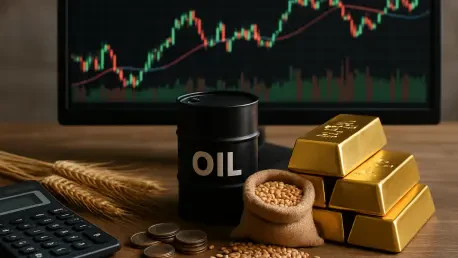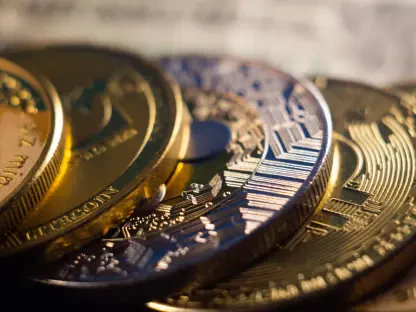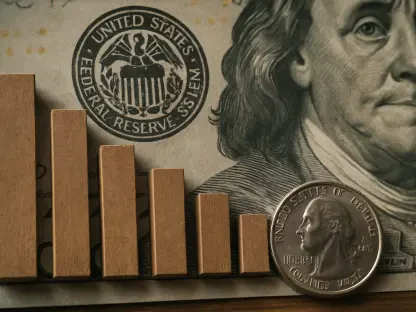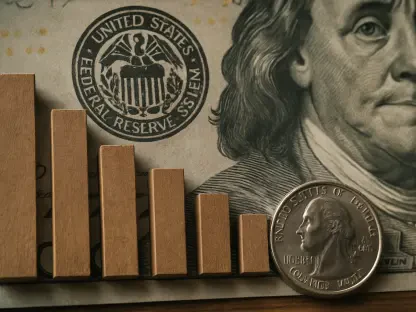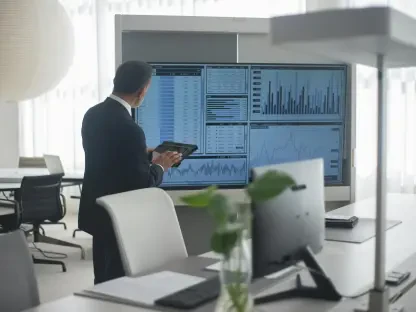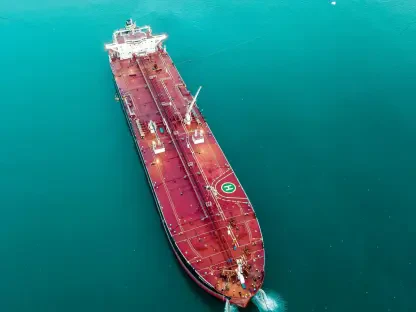The intricate web of global politics and economic dynamics is casting a profound shadow over commodity futures, creating a landscape of uncertainty and opportunity that demands close attention from investors and stakeholders alike. From the volatile swings in crude oil prices to the unexpected surges in natural gas and precious metals, the markets for essential raw materials are being reshaped by forces far beyond traditional supply and demand. Geopolitical tensions, ranging from conflicts in Eastern Europe and the Middle East to trade disputes and sanctions, are disrupting supply chains and driving price instability across energy, metals, and agricultural sectors. These disturbances are not merely fleeting disruptions; they are redefining how commodities are traded, valued, and perceived as both economic necessities and strategic assets. At the same time, broader trends such as persistent inflation and the accelerating transition to green energy add layers of complexity, influencing investor behavior and market dynamics in unprecedented ways. The stakes are immense, as commodities underpin global trade, impact the cost of everyday goods, and play a critical role in economic stability. This exploration delves into the multifaceted impact of geopolitical volatility on commodity futures, examining how wars, policy shifts, and international rivalries are altering the trajectory of these vital markets. By unpacking the specific effects on energy, critical metals, and agricultural commodities, alongside the strategies of investors and stakeholders, a clearer picture emerges of the challenges and potential pathways forward in this turbulent environment.
Unraveling the Geopolitical Impact on Markets
Geopolitical volatility has emerged as a central driver of uncertainty in commodity futures, with conflicts and diplomatic frictions sending shockwaves through global supply chains. Regions like Eastern Europe and the Middle East, often at the heart of such unrest, are critical to the production and transit of key commodities, including oil and natural gas. Disruptions in areas such as the Red Sea, a vital shipping corridor, have led to immediate price spikes in energy markets as traders grapple with the risks of delayed or halted shipments. These events are not isolated; they ripple outward, affecting not just energy but also metals and agricultural goods reliant on stable trade routes. The resulting market nervousness often amplifies volatility, as participants react to both real disruptions and the fear of potential escalations, creating a feedback loop of uncertainty that keeps prices on edge.
Beyond physical disruptions, the geopolitical landscape is further complicated by economic warfare through sanctions and trade policies that reshape commodity flows. U.S. sanctions on Russian oil, for instance, have tightened global energy supplies at various points, pushing prices upward even in the face of oversupply from other regions. Similarly, trade tensions between major economies fragment markets, forcing companies to pivot away from traditional suppliers, often at a higher cost. This fragmentation contributes to a pervasive “risk-off” sentiment among investors, who increasingly seek refuge in safe-haven assets like gold and silver. As geopolitical fault lines continue to shift, the resulting instability underscores the fragility of global commodity networks, challenging market participants to adapt to a reality where political decisions can outweigh economic fundamentals.
Energy Sector Caught in the Storm
Energy commodities stand at the forefront of geopolitical influence, with crude oil and natural gas prices often serving as barometers of global tension. Natural gas, particularly U.S. liquefied natural gas (LNG), has benefited from redirected demand as European and Asian nations seek alternatives amid disrupted supplies from conflict zones. This shift highlights how geopolitical necessities can create unexpected opportunities, positioning certain energy subsectors as outperformers despite broader market challenges. Strong demand for LNG, supported by expanding export infrastructure, illustrates the potential for geopolitical events to carve out winners even in turbulent times, as countries prioritize energy security over cost considerations.
Conversely, crude oil paints a more troubled picture, caught between geopolitical sparks and structural headwinds. While sudden supply risks—such as threats to key production areas—can trigger short-term price surges, the overarching narrative is one of oversupply and muted demand, particularly from major economies like China. This imbalance persists despite occasional geopolitical flare-ups, suggesting that while global tensions can jolt the market temporarily, they often fail to counteract deeper cyclical pressures. The divergence within the energy sector, where LNG thrives while crude oil struggles, exemplifies the uneven impact of geopolitical volatility, requiring investors to carefully parse short-term shocks from long-term trends to avoid missteps in a highly reactive market environment.
Green Transition Amid Global Unrest
Amid the chaos of geopolitical volatility, the global push toward sustainable energy offers a contrasting narrative of long-term growth for certain commodity futures. Critical metals such as copper, lithium, and nickel, which are indispensable for electric vehicles and renewable energy infrastructure, are experiencing heightened demand as the world accelerates its green transition. However, geopolitical tensions can exacerbate supply chain vulnerabilities, with trade barriers and regional conflicts disrupting mining operations or blocking exports. These challenges often lead to tighter markets and higher prices, as nations and corporations scramble to secure reliable sources of these essential materials, underscoring the intersection of environmental goals and political realities.
The so-called “green supercycle” is thus not insulated from global unrest but rather shaped by it, as resource security becomes a strategic priority for many countries. Governments and companies are increasingly focused on diversifying supply chains to mitigate risks associated with geopolitical fragmentation, a trend that could redefine global trade patterns for critical metals over the coming years. While this focus offers opportunities for producers in stable regions, it also introduces new costs and delays for industries reliant on these materials, such as automotive and aerospace. The interplay between the urgent drive for sustainability and the unpredictable nature of international relations creates a complex dynamic, where the promise of green growth must navigate the pitfalls of a fractured global landscape.
Agricultural Futures Facing Dual Pressures
Agricultural commodities, including staples like wheat and corn, are not spared from the ripple effects of geopolitical volatility, which compound existing challenges like climate variability and input costs. Conflicts in key grain-producing regions can severely disrupt exports, sending global prices soaring and raising alarms about food security, particularly in import-dependent nations. Such events highlight the vulnerability of agricultural markets to political instability, where a single disruption can have cascading effects on supply and affordability, impacting populations far beyond the conflict zones themselves.
Adding to this strain are trade disputes and economic policies that further unsettle the sector, often layering additional uncertainty over an already unpredictable market. While price spikes driven by geopolitical events can create short-term opportunities for some investors, the broader outlook for agricultural futures remains mixed, with oversupply and weakening demand in certain areas tempering optimism. Fertilizer costs, often tied to energy prices and thus indirectly to geopolitical tensions, also play a role in squeezing producer margins. This confluence of factors positions agricultural commodities as a particularly volatile segment of the futures market, where geopolitical shocks intersect with natural and economic variables to create a challenging environment for stakeholders at every level.
Adapting Investment Approaches to Uncertainty
In the face of geopolitical volatility, investors in commodity futures are compelled to adopt more nimble and strategic approaches to safeguard returns and manage risks. The unpredictable nature of global tensions pushes market participants toward tactical trades, focusing on commodities that either serve as safe havens, like gold, or align with structural megatrends, such as those tied to the green energy shift. This selective approach reflects a broader shift away from broad, long-only strategies, as the uneven impact of geopolitical events across sectors demands precision and foresight to capitalize on fleeting opportunities while avoiding significant losses.
Effective risk management has become a cornerstone of navigating this volatile landscape, with hedging tools and advanced data analytics playing critical roles in mitigating the impact of sudden price swings. As commodity markets grow increasingly intertwined with global political events, staying ahead requires not just reactive measures but proactive monitoring of international developments and their potential market implications. The ability to quickly adapt to breaking news—whether a new sanction, a ceasefire, or a trade agreement—separates those who merely survive from those who thrive. This dynamic environment underscores the importance of flexibility and informed decision-making, as investors recalibrate portfolios to balance the allure of high-conviction trades with the ever-present specter of geopolitical disruption.
Stakeholders and Regulatory Responses to Instability
Across the spectrum of commodity futures, stakeholders ranging from central banks to producers are recalibrating their strategies to address the challenges posed by geopolitical volatility. Central banks, notably in major economies like China, are actively diversifying reserves by accumulating gold, a move driven by a desire to reduce reliance on traditional financial systems amid global distrust and uncertainty. Meanwhile, organizations like OPEC+ continue to exert significant influence over energy markets, with supply decisions often amplifying or countering the effects of geopolitical events, shaping price trajectories for oil and related commodities in ways that ripple through the global economy.
Regulatory bodies are also stepping into the fray, recognizing the need for enhanced oversight to manage the growing complexity of commodity futures markets under geopolitical stress. The U.S. Commodity Futures Trading Commission (CFTC), for example, is working to harmonize policies and strengthen monitoring mechanisms to ensure stability and transparency, especially as retail participation and 24/7 trading add new layers of risk. These efforts are crucial for maintaining the integrity of commodity futures as tools for price discovery and risk management, particularly in an era where political shocks can rapidly alter market dynamics. By fostering a more resilient framework, regulators aim to provide a buffer against the unpredictable forces of global unrest, ensuring that markets remain functional even under significant strain.
Charting the Path Forward in Turbulent Times
Reflecting on the intricate interplay between geopolitical volatility and commodity futures, it becomes evident that the market has navigated a period of profound disruption with both resilience and adaptation. Energy sectors like natural gas have capitalized on redirected demand, while crude oil grapples with persistent oversupply despite occasional geopolitical jolts. Critical metals tied to the green transition have emerged as focal points of growth, even as supply chains face political hurdles, and agricultural commodities have weathered a storm of dual pressures from conflict and economic policies.
Looking ahead, actionable strategies must prioritize diversification across geographies and sectors to mitigate the risks of concentrated exposure to geopolitical flashpoints. Investors and stakeholders should focus on leveraging technology and real-time analytics to anticipate market shifts, while policymakers could enhance stability by fostering international cooperation to secure critical supply chains. Emphasizing commodities aligned with long-term trends, such as those supporting sustainable energy, offers a pathway to balance short-term volatility with enduring growth prospects. As the global landscape continues to evolve, close monitoring of political developments, alongside economic indicators, will remain essential to navigating the uncertainties that lie beyond the horizon, ensuring that commodity futures adapt to whatever challenges emerge next.
